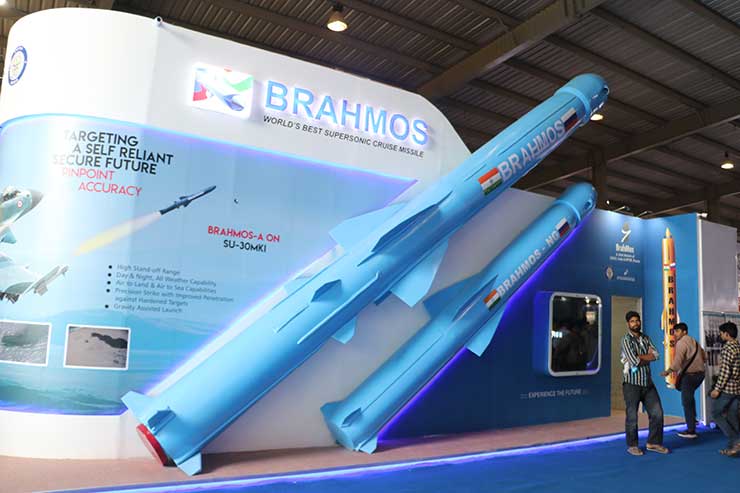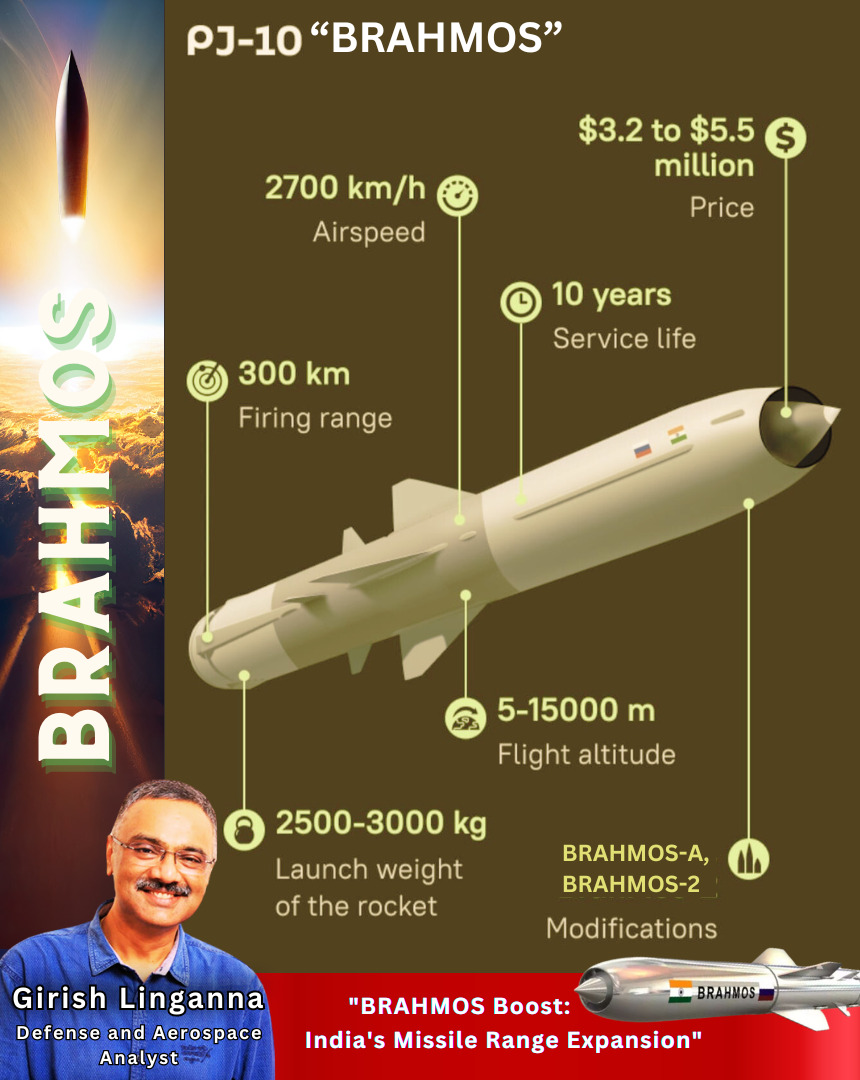
The Indo-Russian partnership known as BRAHMOS is a crucial part of India’s regular missile arsenal. Over time, India has been improving the range of these missiles by incorporating newer technology.
The Indian Navy recently conducted a successful test of an Extended Range (ER) version of the highly praised BRAHMOS missile from a warship. This enhanced the precision strike capability of the Indian Navy, strengthening its power in the vast oceans.
The Indian Navy, in collaboration with BrahMos Aerospace Private Limited (BAPL), successfully engaged a land target at an extended range using an advanced supersonic cruise missile. This achievement reaffirms the concept of “Aatmanirbharta” (self-reliance) by demonstrating the capability of combat-ready ships to carry out precision strikes with an extended range. The Indian Navy shared this accomplishment in a recent post on X towards the end of last month.
Although there was no official confirmation regarding the range of the BRAHMOS variant used, social media was filled with speculation that the missile fired from the Indian Navy vessel had a range of 800 km. Interestingly, the “area warning” issued prior to the missile test indicated a range of 900 km.
To provide some background, this was the second test of an extended-range version of the BRAHMOS missile. The previous trial, which took place in October 2023, involved a variant with a range of 450-500 km specifically developed for the Indian Army. In light of this, Captain DK Sharma, a former spokesperson of the Indian Navy who retired in 2019, stated to Sputnik , that BrahMos Aerospace, the missile’s manufacturer, has the ability to modify the rocket according to the operational needs of the Indian Armed Forces.
During a conversation with the media house, Captain DK Sharma explained that the developers of BRAHMOS have the ability to make adjustments to the missile. By modifying the metallurgy or incorporating advanced technology, it is possible to reduce the weight of the projectile. This reduction in weight can allow for additional fuel to be carried, which in turn can increase the missile’s range.
The Indian Navy, in collaboration with BrahMos Aerospace Private Limited (BAPL), successfully engaged a land target at an extended range using an advanced supersonic cruise missile. This achievement reaffirms the concept of “Aatmanirbharta” (self-reliance) by demonstrating the capability of combat-ready ships to carry out precision strikes with an extended range
According to Captain DK Sharma, it is reasonable to believe that an 800 km range BRAHMOS missile could have been achieved considering the ongoing developments. He emphasised that the range of the BRAHMOS missile could surpass 800 km due to significant advancements in missile system technology and metallurgy. The defense analyst further stated that improvements in the range of the BRAHMOS missile are a common and expected occurrence.
Sharma suggested that the Original Equipment Manufacturer (OEM) responsible for manufacturing the BRAHMOS missile has complete control over its development. He expressed his belief that the missile’s range will certainly improve and could potentially exceed 800 km as new technologies are incorporated into its system.
According to Air Marshal (Retd) M. Matheswaran, the former Deputy Chief of Integrated Defence Staff (IDS), the original intention behind the joint venture between New Delhi and Moscow was to incorporate some adaptation, modification, and introduce new technologies to enable complete indigenous production of the BRAHMOS missile in India.

Matheswaran explained to Sputnik that when the deal was signed in the late 1990s, India was not a signatory to the Missile Technology Control Regime (MTCR). Consequently, it would not have been officially permissible for Russia to provide India with any missile exceeding a range of 300 kilometers.
Once India became a signatory to the Missile Technology Control Regime (MTCR) in 2016, all the restrictions associated with it were lifted.
The Missile Technology Control Regime (MTCR) is an international agreement that aims to prevent the proliferation of missiles and unmanned aerial vehicles (UAVs) capable of delivering weapons of mass destruction. It establishes guidelines and restrictions on the export, transfer, and sharing of sensitive missile technology among member countries. The MTCR restricts the transfer of missiles with a range exceeding 300 kilometers and a payload capacity greater than 500 kilograms. Member countries cooperate to control the spread of missile technology to prevent its misuse for military purposes, particularly in the context of nuclear, chemical, and biological weapons.
The main benefit of being a signatory to the Missile Technology Control Regime (MTCR) is gaining access to advanced missile technology from other member countries. As a signatory, a country can engage in technology sharing and collaboration, which can enhance its own missile capabilities and contribute to international non-proliferation efforts
The main benefit of being a signatory to the Missile Technology Control Regime (MTCR) is gaining access to advanced missile technology from other member countries. As a signatory, a country can engage in technology sharing and collaboration, which can enhance its own missile capabilities and contribute to international non-proliferation efforts. Additionally, being part of the MTCR community helps strengthen diplomatic and strategic relationships with other member states.
Matheswaran, concluded that since range primarily depends on propulsion technology, India has considerable expertise in that field. Consequently, it is logical that India would desire longer-range variants of the BRAHMOS missile, and that is the direction in which they have progressed.
–The writer is a Defence and Aerospace Analyst. The views expressed are of the writer and do not necessarily reflect the views of Raksha Anirveda








